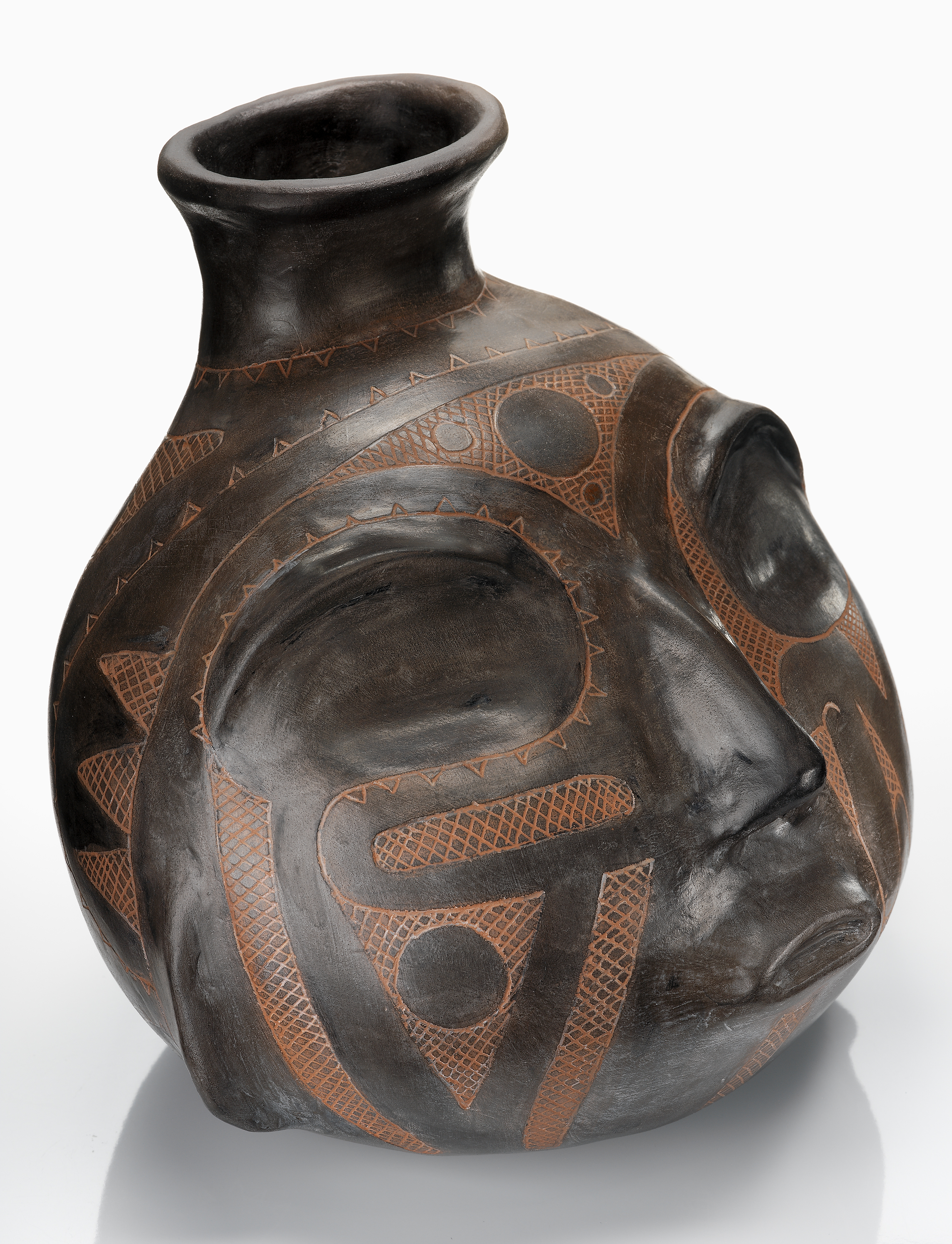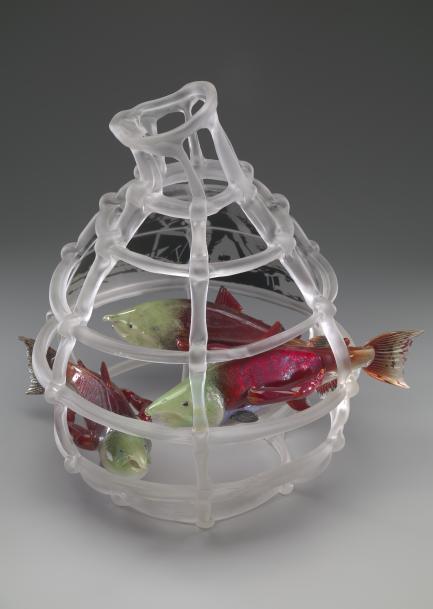Our River's Ancestors, 2014
Marvin Oliver (Quinault/Isleta Pueblo, b. 1946), Seattle, Washington
Glass, ink
NMAI purchase from the artist, 2015 (26/9630)
“Ancestral Connections” Links the Past to the Present Through The Work of 10 Contemporary Artists

Caddo Head Pot, 2005
Jeri Redcorn (Caddo/Potawatomi, b. 1939), Norman, Oklahoma
Pottery, pigments
NMAI purchase from the artist, 2005 (26/5161)
“Ancestral Connections” will open at the Smithsonian’s National Museum of the American Indian–George Gustav Heye Center May 4. Organized by the museum’s head curator Ann McMullen, this exhibition explores how 10 contemporary artists draw on aspects of their heritage to create new and compelling works of art.
The exhibition covers vast territory: the works illustrate how connections to Native culture, tradition and history serve as a catalyst for contemporary Native artistic expression. “Ancestral Connections” shows how the featured artists use heritage, tradition, and history—sometimes combined with personal experiences or remembered ancestors—as reference points rather than rules for their art. Some of the artists have been shaped by their traditional homelands and landscapes, while others draw on traditional worldviews, lifeways and artistic traditions. Grounded in tradition and a sense of themselves as Native people, they have explored new materials, techniques, forms, and art genres to challenge the boundaries of what Native art can be.
The exhibition includes works by Marvin Oliver (Quinault/Isleta Pueblo, b. 1946), whose glass sculpture depicts salmon, from which his people are descended; Lillian Pitt (Warm Springs/Wasco/Yakama, b. 1943), who uses art to honor her culture and heritage from the Columbia River region; Jim Schoppert (Tlingit, 1947–1992), whose sculptures challenge the definition of Northwest Coast Indian art; Michael Massie (Labrador Inuit/Métis, b. 1962), who draws inspiration from cultures beyond his own to expand the bounds of Inuit art; Rose B. Simpson (Santa Clara Pueblo, b. 1983), whose mixed-media work is a way for her to ground herself and connect physically with the earth; Anita Fields (Osage, b. 1951), whose pieces are informed by the Osage worldview; Gedion Caseo Fernandez Nolasco (Quechua, b. 1964), whose piece is an homage to the Ashaninka, an Andean forest people whose members formerly visited his hometown in Peru; Jackie Larson Bread (Pikuni Blackfeet, b. 1960) whose art reflects the past and present of her Blackfeet people; Jeri Redcorn (Caddo/Potawatomi, b. 1939), who uses pottery to connect to her ancestors and their history; and Isabel Rorick (Haida, b. 1955) and Robin Rorick (Haida, b. 1980) whose painted spruce root basketry hats connect them to their ancestral roots.
About the National Museum of the American Indian
The National Museum of the American Indian is committed to advancing knowledge and understanding of the Native cultures of the Western Hemisphere—past, present and future—through partnership with Native people and others. The museum’s George Gustav Heye Center is located at One Bowling Green in New York City. For additional information, including hours and directions, visit AmericanIndian.SI.edu. Follow the museum via social media on Facebook, Twitter and Instagram.
# # #
SI-135-2019

